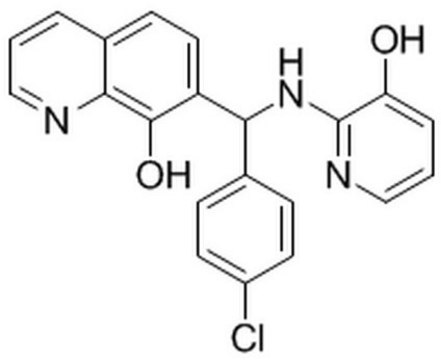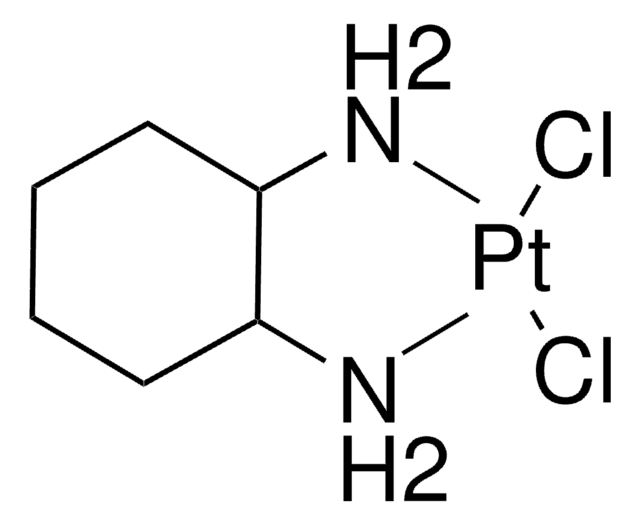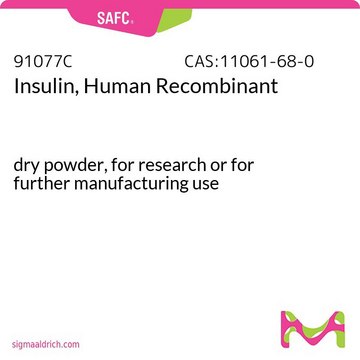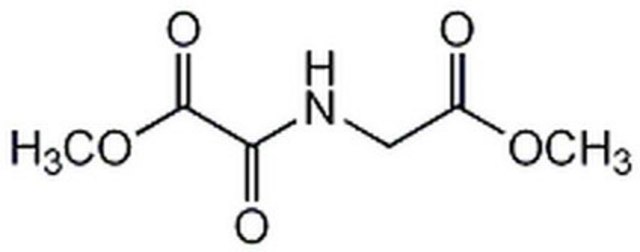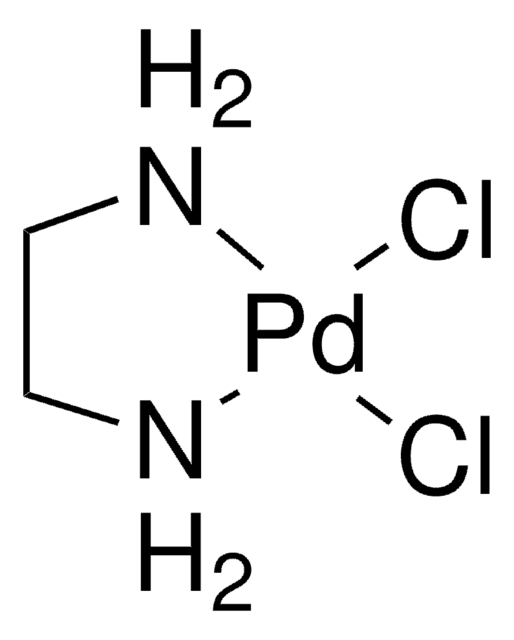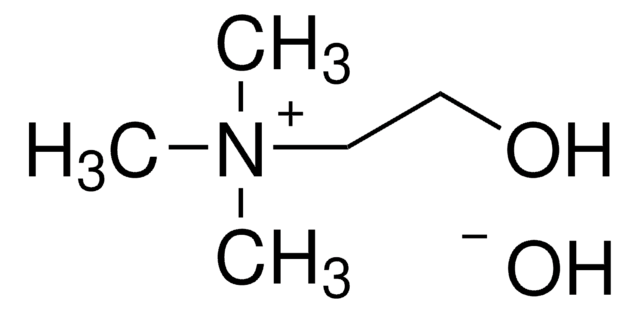推荐产品
方案
≥98% (HPLC)
表单
powder
颜色
white to beige
溶解性
DMSO: 2 mg/mL, clear (warmed)
储存温度
2-8°C
SMILES字符串
OC(C1=C(N2CCC3CC3)C=CC(F)=C1)=C(C(NCC(O)=O)=O)C2=O
InChI
1S/C17H17FN2O5/c18-10-3-4-12-11(7-10)15(23)14(16(24)19-8-13(21)22)17(25)20(12)6-5-9-1-2-9/h3-4,7,9,23H,1-2,5-6,8H2,(H,19,24)(H,21,22)
InChI key
TYHRZQVUPPODPT-UHFFFAOYSA-N
生化/生理作用
GSK360A (GSK1120360A) is an orally active HIF-prolyl 4-hydroxylase (HIF-PHD) inhibitor that targets all three HIF-PHD isoforms (PHD1 > PHD2 = PHD3) with high potency (IC50 from 10-120 nM) in a 2-oxoglutarate (2-OG)-competitive manner. GSK360A promotes cardiomyocyte mitochondrial aerobic glycolysis under normoxic conditions by stabilizing cellular hypoxia-inducible factor-1 (HIF-1) and thereby upregulating HIF-1α target genes transcription (50 μM for 8 hrs in murine cardiomyocyte HL-1 cultures), including pyruvate dehydrogenase kinase-1 (PDK1) and hexokinase II (HKII). GSK360A treatment is shown to protect against acute myocardial ischemia–reperfusion injury (IRI) both in cultures and in rats in vivo (30 mg/kg p.o.) by reducing mitochondrial permeability transition pore (MPTP) opening and oxidative stress during IRI.
Orally active, potent HIF prolyl 4-hydroxylase (PHD) inhibitor with in vitro and in vivo efficacy against acute myocardial ischemia-reperfusion injury (IRI).
储存分类代码
11 - Combustible Solids
WGK
WGK 3
闪点(°F)
Not applicable
闪点(°C)
Not applicable
法规信息
新产品
历史批次信息供参考:
分析证书(COA)
Lot/Batch Number
Weike Bao et al.
Journal of cardiovascular pharmacology, 56(2), 147-155 (2010-08-18)
Hypoxia inducible factors (HIFs) are transcription factors that are regulated by HIF-prolyl 4-hydroxylases (PHDs) in response to changes in oxygen tension. Once activated, HIFs play an important role in angiogenesis, erythropoiesis, proliferation, cell survival, inflammation, and energy metabolism. We hypothesized
Sang-Ging Ong et al.
Cardiovascular research, 104(1), 24-36 (2014-07-30)
Hypoxia-inducible factor-1 (HIF-1) has been reported to promote tolerance against acute myocardial ischaemia-reperfusion injury (IRI). However, the mechanism through which HIF-1 stabilization actually confers this cardioprotection is not clear. We investigated whether HIF-1α stabilization protects the heart against acute IRI
J P Gumucio et al.
Bone & joint research, 6(1), 57-65 (2017-01-22)
Rotator cuff tears are among the most frequent upper extremity injuries. Current treatment strategies do not address the poor quality of the muscle and tendon following chronic rotator cuff tears. Hypoxia-inducible factor-1 alpha (HIF-1α) is a transcription factor that activates
Jin Zhou et al.
PloS one, 12(9), e0184049-e0184049 (2017-09-08)
There is interest in pharmacologic preconditioning for end-organ protection by targeting the HIF system. This can be accomplished by inhibition of prolyl 4-hydroxylase (PHD). GSK360A is an orally active PHD inhibitor that has been previously shown to protect the failing
Tomohiro Suhara et al.
Proceedings of the National Academy of Sciences of the United States of America, 112(37), 11642-11647 (2015-09-02)
Loss of prolyl hydroxylase 2 (PHD2) activates the hypoxia-inducible factor-dependent hypoxic response, including anaerobic glycolysis, which causes large amounts of lactate to be released from cells into the circulation. We found that Phd2-null mouse embryonic fibroblasts (MEFs) produced more lactate
我们的科学家团队拥有各种研究领域经验,包括生命科学、材料科学、化学合成、色谱、分析及许多其他领域.
联系技术服务部门